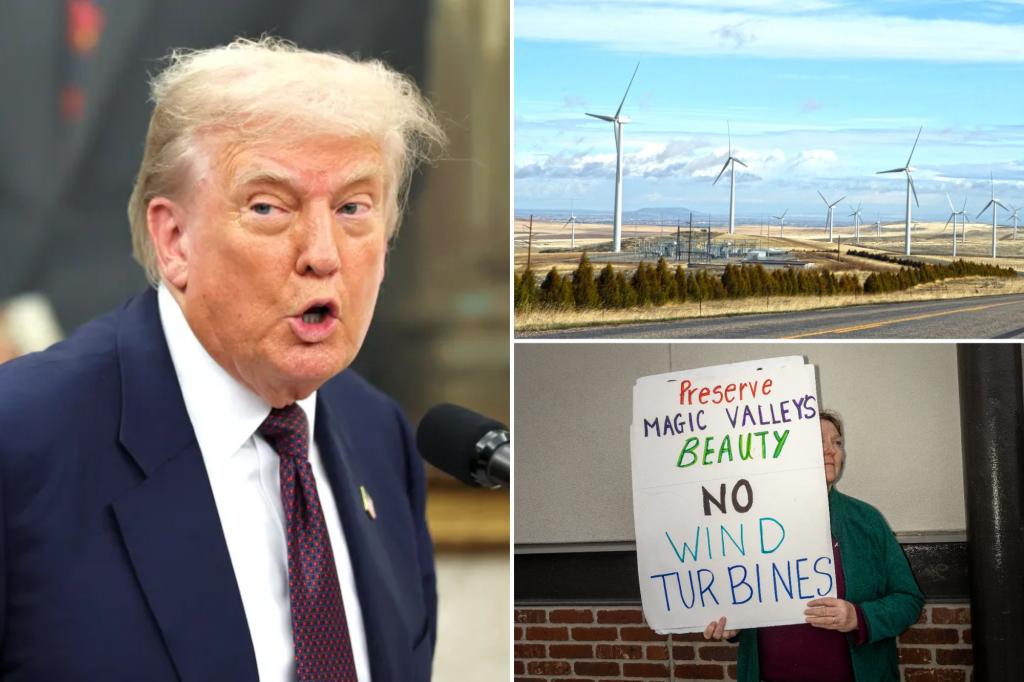The Bureau of Land Management in December signed off on a scaled-down plan for the Lava Ridge Wind Project northeast of Twin Falls, with 241 wind turbines instead of 400.
Why it matters
- The revised plan reflects a compromise to reduce environmental impact while still promoting renewable energy.
- The decision indicates ongoing tensions between federal energy initiatives and local ecological considerations.
- The approval process highlights the complexities of balancing energy development with environmental stewardship.
In December, the Bureau of Land Management (BLM) made a significant decision regarding the Lava Ridge Wind Project, located northeast of Twin Falls, Idaho. The agency approved a modified proposal that will see the construction of 241 wind turbines, a considerable reduction from the initially planned 400 turbines. This change comes amid ongoing discussions and debates about the project's environmental implications and its potential impact on local wildlife and landscapes.
The Lava Ridge Wind Project, envisioned to harness the power of wind to generate renewable energy, has been a subject of scrutiny since its inception. Environmental groups have raised concerns about the potential disruption to local ecosystems, particularly regarding bird populations and habitats that could be affected by the extensive infrastructure required for such a large-scale wind farm. The reduction in the number of turbines is seen as a response to these concerns, aiming to strike a balance between the need for sustainable energy sources and the preservation of Idaho's natural environment.
The BLM's decision is part of a broader trend in the United States, where federal agencies are increasingly tasked with navigating the complexities of energy development in the face of environmental advocacy. The Biden administration has emphasized the importance of transitioning to renewable energy sources as a means to combat climate change, yet projects like Lava Ridge highlight the challenges involved in this transition. The approval of a scaled-down version of the project reflects an attempt to address these challenges while still moving forward with energy production.
Local stakeholders have expressed mixed feelings about the revised plan. While some welcome the move towards renewable energy, others remain concerned about the ecological footprint of the wind farm, even in its reduced form. The debate underscores the necessity for ongoing dialogue between energy developers, environmentalists, and local communities to ensure that all voices are heard in the decision-making process.
The BLM's approval process for the Lava Ridge project included extensive public commentary and environmental assessments. These evaluations aimed to identify potential impacts and mitigate adverse effects on wildlife and the surrounding environment. The decision to limit the number of turbines is seen as a proactive measure to minimize ecological disruption, but it remains to be seen how effective these measures will be in practice.
Wind energy is touted as one of the cleanest forms of renewable energy, contributing to low-carbon electricity generation. Proponents argue that projects like Lava Ridge are vital for meeting the nation's energy needs while reducing reliance on fossil fuels. However, the challenges faced by such projects highlight the ongoing tension between advancing renewable energy and protecting natural habitats.
As the project moves forward, attention will be focused on how the BLM and developers implement the approved plans and whether they can successfully address the environmental concerns that have been raised. The outcome of the Lava Ridge Wind Project may serve as a precedent for future renewable energy initiatives across the country, particularly in areas where ecological considerations are paramount.
Furthermore, the shifting dynamics in federal energy policy, particularly during periods of administrative change, can significantly influence the fate of such projects. The approval by the BLM under the current administration indicates a willingness to adapt and find middle ground, but it also raises questions about how future projects will be approached as political priorities evolve.
In summary, the decision to approve a scaled-back version of the Lava Ridge Wind Project is a reflection of the broader challenges facing renewable energy development in the United States. As the nation grapples with the imperative of transitioning to sustainable energy sources, the balance between environmental protection and energy production remains a critical issue that will continue to shape the discourse around such projects.











